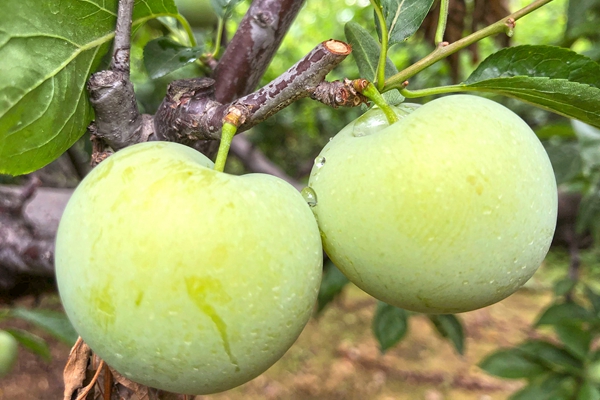Charitable community and ancestral temple
Updated: 2012-03-30
Of all the historical buildings along Pingjiang St, the Yi Zhuang ancestral temple accounts for a relatively large part, which is a good reflection of the high place that charitable communities and ancestral halls held in earlier times.
This charitable community was the work of Fan Zhongyan, a well-known official of the Song Dynasty (AD 420-479). In the first year of the Huangyou period of the Northern Song (1049), when Fan Zhongyan retired as the magistrate of Hangzhou, Zhenjiang province, and returned to his hometown, Hangzhou, as mayor, he decided to contribute something to his clan, so he bought 1,000 mu (0.67square kilometers) of fertile farmland for them. The land was declared to be public property, referred to as charitable farmland.
There were also charitable houses and schools established at Lingzhi Fang (in front of the village of Fan). The mayor also drew up rules and regulations for the community, mainly for the purpose of worshipping ancestors in the spring and autumn, repairing tombs, compiling a geneology, and supporting the poor with rent from the farmland.
The community was intended to help the needy of the clan -- e.g. widows, widowers, orphans, or the childless -- whenever they needed money. A charitable community generally had a person in charge and a vice-head, who also served as cashier.
In the Northern and Southern Song (960-1279) and Yuan (1271-1368) dynasties, the government advocated Confucianism and encouraged the building of charitable communities. It praised their moral significance in only providing tax breaks for lands, and abolishing other practices such as corvee labor and ‘keshe’ (a tax collection system of the Tang and Song). Over time, officials and landlords began to copy the charitable community system and set up their own communities, which grew in number, especially after the Jiajing (1522-1566) and Wanli (1573-1620) periods of the Ming Dynasty. Shen Shixing and his son Shen Yongmao, who were senior officials of the Wanli period, bought 1,100 mu of farmland in Suzhou as a Shen family comminity.
During the Kangxi period of the Qing Dynasty (1654-1722), the government began commending the founders of charitable communities and provided a horizontal board-plaque with the inscription ‘dunben biaosu’ (communities make people honest and sincere) and even passed laws to protect them. Over time, the charitable community became a way whereby large landowners would annex land and, when combined with the ancestral hall and a school, it formed an important financial foundation and a way to maintain or expand family power.
In the late Qing, some local governments began paying more attention to these communities and included them in the historical records. According to one, the Historical Records of Wu County, at the end of the Qing, there were 62 charitable communities in the Wu, Changzhou, and Yuanhe counties around Suzhou. Of these, 55 had been built in the Qing, 32 of them after the Tongzhi period. They covered more than 70,000 mu (4.67 square kilometers) of land in all. There were 32 and 23 such communities in 1946 and 1949. The charitable communities and ancestral halls on Pingjiang are in a cluster, with some of them having retained their original structure. Pan’s Songlin community and Dong’s are under state and protection, so we’ll introduce them to you.
Pan’s Songlin charitable community, at 58 Xuanqiao Alley, has an ancestral hall 10.5 meters wide by 10.6 meters long with some fairly exquisite decorations in the floral hall. It was established by Pan Zunqi, an official of the Imperial Academy, in the 12th year of the Daoguang era of the Qing Dynasty (1882). Pan followed the wishes of his grandfather, Pan Yijuan and put the community on the site of the old Baisong Yichan library, owned by a bibliophile, Huang Pilie, during in Jiaqing period. The ancestral hall and floral hall are still standing and there is a monument from the 3rd year of the Chengfeng period (1853) with a history of the Songlin charitable community.
The Jiyang charitable community of the Ding Family, at 41 Xuanqiao Alley, was established by Ding Jinxin, an official, in the 18th year of the Daoguang periof of the Qing (1821-1850) in accordance with the wishes of his father Ding Kentang. It still has three yards in existence, the first gate of which has five purlins, with a horizontal slate with Ding’s Charitable Community inscribed on it. At the back there is a gatehouse from the 7th year of the Xianfeng period of the Qing (1857), with a horizontal piece of slate inscribed with the characters ‘Yize Liuchang’ (merit will be praised and remembered for generations). The ancestral hall is 12.3m by 9.6m, with the rafters of its front eaves like upward-turning cranes. The first and second yards are connected by rooms on the eastern and western sides, with clumps of bamboo in between. The second and third yards are linked by a single hallway and there are three rooms at the back.
The Songfen charitable community of the Wang Family, at 254 Pingjiang Rd, was built in the 22nd year of the Daoguang era of the Qing (1842) by Wang Jingchun, and his brother’s son Wang Tingran, in accordance with the wishes of his father Wang Yiming. Its five yards, facing west, still exist. The ancestral hall in the second yard is 12.2m by 12.6m and has rectangular beams of zhao wood (similar to oak). The eaves of the front corridor resemble those of a ship.
The Jiang Family, or Songyin, charitable community, at 35 Huxiangshi Alley, was built in the 9th year of the Guangxu period of the Qing (1883) by Jiang Zhaolie, a student of the Imperial College, in accordance with the wishes of his great-grandfather, Jiang Hao. It faces south and has two ancestral halls of six yards. The gate of the eastern one is three-rooms wide, with wooden arches and square blocks between the crossbars on the front and back eaves. It also has a stone with an inscription with ‘An Account of Jiang’s Charitable Farmlands’ done by Pan Zunqi, in the 9th year of the Guangxu period. The ancestral hall is 10.6m by 9.8m with eaves in the shape of a ship with an upward turn, and blue stone drum piers at the bottom of the wooden columns.
The Hongnong charitable community, owned by Yang Family, at 8 Huntang Alley, was founded by Yang Tingdai, an official, in the 25th year of the Guangxu era of the Qing (1875-1908) in accordance with the wishes of his grandfather, Yang Chengzong. There are three compounds of five yards facing south still remaining, with an ancestral hall in the third yard of 11.2m by 10.2m. Its beams are rectangular and there are some remnants of colorful paintings, as well as zhao wood carved with deer, sparrows and intertwining flowers with branches. The second yard of the middle ancestral hall has a brick gatehouse with an inscription, ‘Hanyuan Liufang (the scholarly community will leave a good name for a hundred generations), that was built in the 54th year of the Qianlong period (1789). The third yard also has a gatehouse built in the 28th year of the Daoguang period (1848). In 1995, Yangjie (an actress known as Xia Meng), who resided in Hong Kong, and other members of the clan raised funds to renovate the community.
The Chunhui charitable community of the Xu Family, at 101 Nanshizi St, was founded by a widely praised filial daughter, Xu Shuying, in accordance with the wishes of her father, Xu Peizao. During the Xuantong period of Qing Dynasty (1909), the governor of Jiangsu, Chen Qitai, asked the imperial administration to record the event. The western ancestral hall still has a three-room hall, with rectangular beams decorated with carvings. There is also a row of rooms along the eastern and western sides of the hall. The eastern ancestral hall has two yards with halls connected by corridors, with houses on the eastern and western sides. The front hall, Mandarin Duck Hall, has 14 square stones depicting Ms Xu’s 70 years. The garden on the eastern side has stones with ginkgo trees and orange osmanthus.
The charitable community of the Dong Family, at 65 Dalangqiao Alley, was established in the 4th year of the Daoguang era of the Qing (1824). To commemorate the event, a prominent scholar of the period, Wu Tingchen, wrote about it. It still has two ancestral halls with three yards facing south. The western ancestral hall is 12.2m by 10.2m, with rectangular beams. The front eaves are ship-like with an upward turn. There are wooden arches and square blocks between the crossbars of the outer eaves. The bottoms of the wooden columns are blue stone drum piers. The wall has two embedded, square, carved stones from the 5th year of the Daoguang period. There is a five-room open hallway behind it.
The Guiyin charitable community of the Hong Family, at 29 Xuanqiao Alley, dates back to the 17th year of the Guangxu period of the Qing (1891), when Hong Jun ended his diplomatic career in Europe and returned home to build a new residence (the old one was in Xizhijia Alley) with a charitable community on the southeast side. The community was a four-sided closed courtyard with a house at the entrance, an ancestral hall, and a row of rooms on the eastern and western. The house at the entrance has three rooms and faces the spirit screen. The wall of the eastern room has a stone embedded describing the owners. The ancestral hall is 11m by 8.6m, with rectangular beams. The front eaves are ship-type turning upwards. The outward eaves are wooden arches with square blocks between the crossbars. The blocks supporting the roof are decorated with elaborate carvings. There are six rooms on the eastern and western sides of the courtyard.
The ancestral halls came in several varieties, such as those for worshiping gods, those for famous officials, those for virtuous villagers, those for filial sons and daughters with integrity, or for clans, or families. In fact, ancestral halls were more common than charitable communities. In the case of families who built charitable communities, they would build an ancestral hall in the communities to commemorate their ancestors. In the case of those without charitable communities, there was often a specific hall for ancestor worship, called the ancestral hall.
The streets and lanes of Suzhou have many ancestral halls, a lot of them on Pingjiang St, with historical records. The more famous ancestral halls include: that for the sages of Anhui (hall of the martyrs of the Anhui army), in the Anhui Guild Hall, Nanxianzi Alley; the hall of the valiant, loyal Cheng Xueqi; the hall of Ding Yuanfu; the hall of two able, virtuous members of the Ding family, Ding Kuan and Ding Gongzhu, at the Jiyang charitable community in Xuanqiao Alley; the hall for 10 able, virtuous persons, which included Sheng Du; the hall of Sheng Xu, in Cao Hu Xu Alley; the hall for Governor-general Chen; the hall for Guan Jinqing, in Dingxiang Alley; and the hall for the Deng clan, in Daliuzhi Alley.
Of these, the Deng clan’s ancestral hall is the larger, better kept, and more complete. It was built during the Qing and faces the south, with two entrances. The main entrance has three yards, for the first gate, the ancestral hall, and the back hall. The ancestral hall, with a yingshan roof and three rooms, is 11.5m by 12m, with rectangular beams, and front and back eaves that turn upwards. The gable of the hall is brick, and there are two corridors in front. The eastern entrance still has a balcony with flower baskets and delicate carvings, and front and back eaves that turn upwards. The Deng ancestral hall is under Suzhou municipal protection.
Tel:0510-81178873
E-mail:haiyulu@163.com


